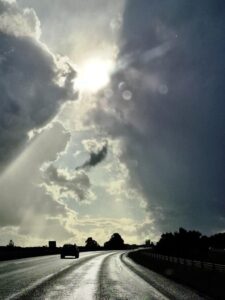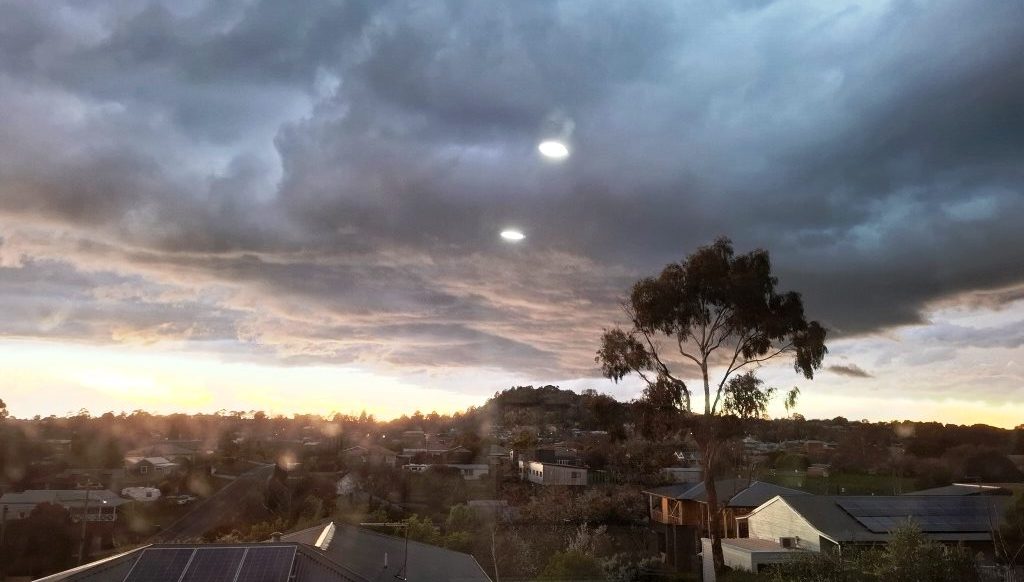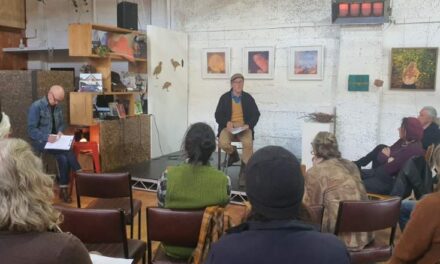Victor Szwed
The recent typical weather for August has given us glimpses of spring mixed with wintry and windy conditions. Expect more of the same for September before spring really takes hold.
Rainfall for August has been below average at 69mm compared to the long-term average of 103.6 mm. So far this year we are running well below the average rainfall of 600mm to the end of August with just 438mm. The Bureau of Meteorology expects spring rainfall to be above average for the eastern half of Australia and drier for the western half. Warmer than normal days and nights are expected.

Stormy conditions on the Western Highway, 25th August, mixed with sunshine and rain. (Photo: Victor Szwed)
There have been a number of stormy and windy periods causing damage around the state. On Sunday the 25th, we got caught in a storm with hailstones on the way home from Melbourne. Heavy periods of rain, strong winds mixed in with breaks of sunshine are not unusual for late winter into early spring.
Across the nation, the BoM has reported that August was the warmest August in Australia since records began. On the 27th, Yampi Sound in the Kimberley region recorded the hottest Australian August day ever at 41.6 degrees. Seven out of ten of the hottest August days ever were recorded in 2024. News reports on the 31st of August have stated that at least 7 localities in Queensland also experienced record temperatures for August. Generally, temperatures were 15 degrees above average.
Efforts to keep global warming within certain targets have not succeeded. In Australia, our targets to reduce greenhouse gases have struggled in recent times due to a number of factors. It is not only governments which have responsibilities but each and everyone of us should do what we can to reduce greenhouse gases.
Our region has had a milder than normal winter with only 70% of our average rainfall. While we did have some frosty days a while back, we have not had snow flurries or snow falls.
The highest ever daily rainfall recorded in Australia was on 5th January 1979 at Bellenden Ker Top Station located south of Cairns with 1,352.5mm of rain in one day! Compare this with Daylesford’s highest rainfall for a whole year of 1,321.5mm in 1973. Bellenden Ker had 1,947mm over just two days on the 4th and 5th of January 1979. Daylesford’s lowest annual rainfall of 420.8mm occurred in 1982. Our long-term average is 877mm. Records have been kept by the Bureau since 1868.
Victor Szwed is a Daylesford resident who contributes a regular column about the weather to The Wombat Post.











